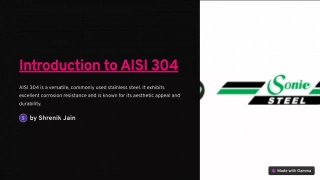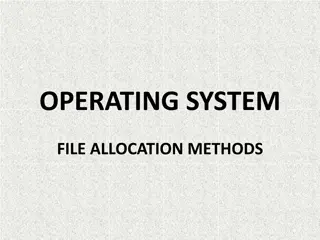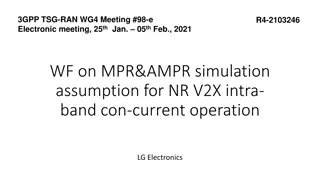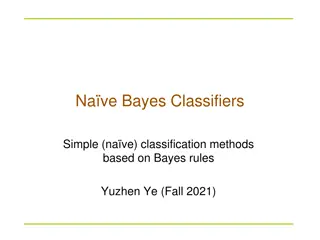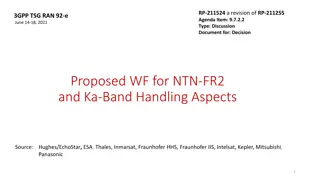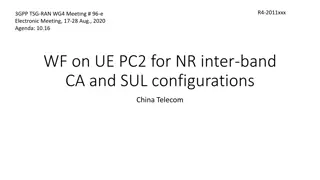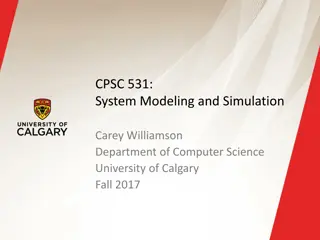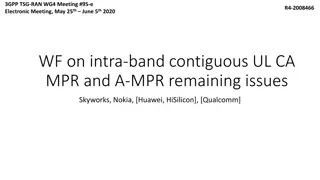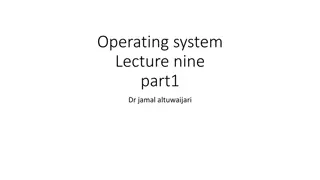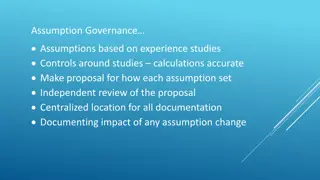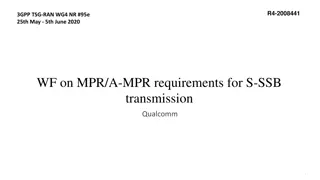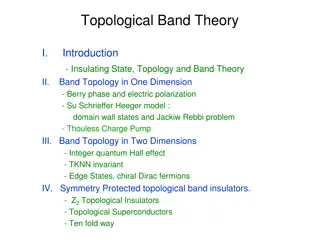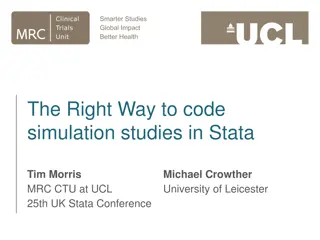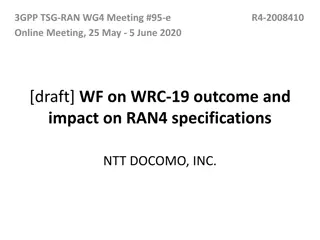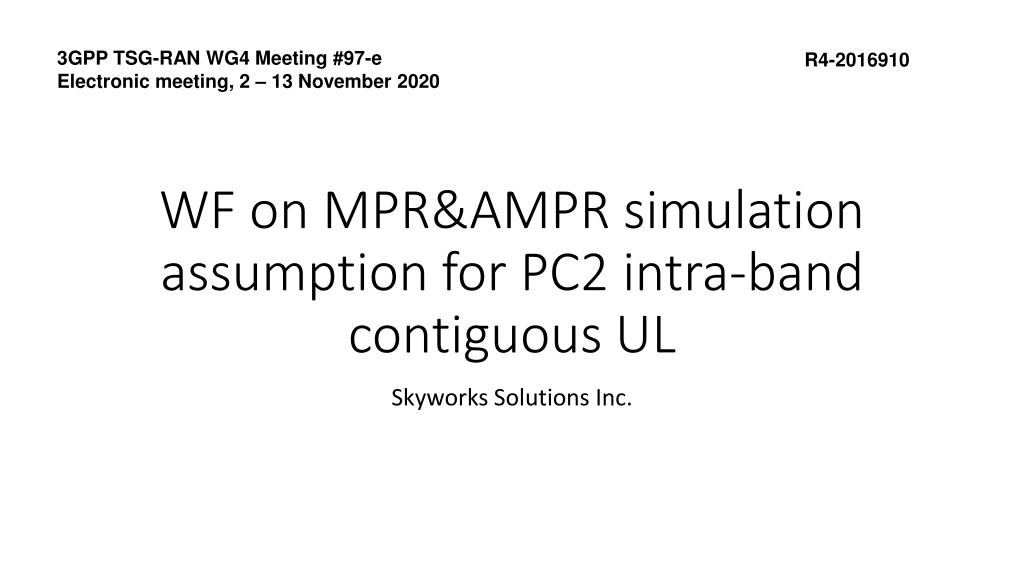
Waveform and Allocation Analysis for UL Band in 3GPP Meeting #97-e
Explore the simulation assumptions and architecture details discussed in the 3GPP TSG-RAN-WG4 meeting regarding the RF requirements for UL band transmission. Dive into options for power amplification, MIMO support, and MPR considerations to enhance future cellular communications.
Uploaded on | 0 Views
Download Presentation

Please find below an Image/Link to download the presentation.
The content on the website is provided AS IS for your information and personal use only. It may not be sold, licensed, or shared on other websites without obtaining consent from the author. Download presentation by click this link. If you encounter any issues during the download, it is possible that the publisher has removed the file from their server.
E N D
Presentation Transcript
3GPP TSG-RAN WG4 Meeting #97-e Electronic meeting, 2 13 November 2020 R4-2016910 WF on MPR&R simulation assumption for PC2 intra-band contiguous UL Skyworks Solutions Inc.
Background on architecture Current implementations discussed in WF on RF requirements for PC2 intra-band contiguous UL CA : Option 1: PC2 (26dBm) supported with one 26dBm PA supporting 200MHz BW baseline for PC3 and should be the baseline for PC2 (we have provided input on this) UL MIMO can be supported on top of UL CA with an additional path Option 2: PC2 (26dBm) supported with two 26dBm PA supporting 100MHz BW each can be accommodated by the MPR of Option 1 as we did for PC3 UL MIMO is not supported on top of UL CA Option 3: PC2 (26dBm) supported with two 23dBm PA supporting 200MHz BW each: RIMD issue is more severe as it is in band and since single CC MPR for TxDiv is not yet agreed we don t really have a baseline for this. I think we could still accommodate based on the 1 PA case with an additional MPR. UL MIMO could be supported on top of UL CA but may require additional MPR vs UL CA case.
WF on Scope Current version assumes all three options in WF on RF requirements for PC2 intra-band contiguous UL CA need to be supported, but in case of down selection the WF will be revised Whether same MPR table can be used for more than one option, or delta MPR is enough compared to baseline 1PA MPR is FFS In order to finalize option 3, single CC MPR based on Tx Diversity needs to be available and additional MPR may be required for UL MIMO. Whether different MPR values are defined for class B and class C UL CA is FSS Whether option 2 is allowed for class B UL CA is FSS
WF on allocations and waveforms Inner/outer contiguous allocations definition for PC3 is used to evaluate MPR and AMPR Inner/outer1/outer2 contiguous allocations definition for PC3 is used to evaluate MPR and AMPR Both CP-OFDM and DFT-s-OFDM waveforms are used. Channel BW configurations valid for class B and C should be evaluated Class B: at least 20MHz+20MHz 15kHz SCS and 50MHz+50MHz 15kHz SCS Class C: at least 60MHz+100MHz 30kHz SCS and 100MHz+100MHz 30kHz SCS MPR based on ACLR and SEM agreements in WF on RF requirements for PC2 intra-band contiguous UL CA are evaluated based on a number of inner/outer, inner/outer1/2 cases NS-04 A-MPR for -13dBm/MHz IM3 and -25dBm/MHz IM3 are evaluated especially for 1RB+1RB non-contiguous and Full+full allocation cases
WF on assumptions for MPR A-MPR evaluation 4dB post PA losses Equal PSD and Equal back-off power split For 2 PA cases antenna isolation is 10dB Option 1 and 2 based on 26dBm PAs: each PA is calibrated for 31dBc ACLR at 25dBm with 20MHz 100RB0 DFT-s-OFDM QPSK waveform Option 3 based on 23dBm PAs: each PA is calibrated for 30dBc ACLR at 22dBm with 20MHz 100RB0 DFT-s-OFDM QPSK waveform

